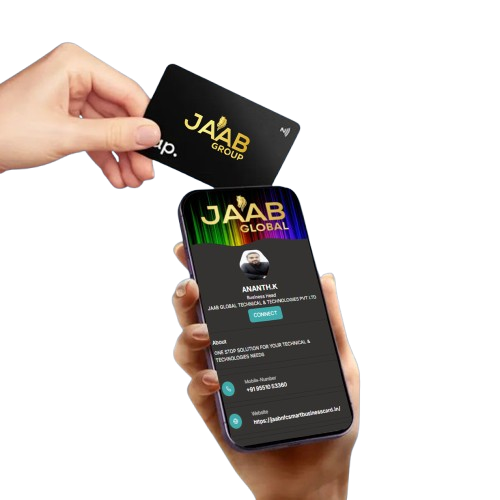
NFC Business Card Security: How Your Data Stays Safe with Contactless Sharing
As NFC (Near Field Communication) technology becomes the backbone of modern digital networking, concerns about NFC business card security are natural. How secure is your data when it’s shared through contactless cards? Can anyone intercept or clone your information?
The short answer: NFC business cards are built with multiple layers of encryption and authentication, making them one of the safest ways to share contact details in the digital world. In this article, we’ll break down how your data stays secure with contactless sharing.
1. Understanding NFC Technology in Business Cards
NFC business cards use a microchip that transmits small amounts of data — like your name, phone number, website, or digital profile — when tapped against a compatible smartphone.
The NFC chip functions in a passive mode, meaning it only transfers data when in close proximity (typically 1–4 cm). No continuous broadcasting or active signal occurs, significantly reducing exposure to unauthorized access.
✅ Security advantage: Limited range = minimal risk of interception.
2. How NFC Business Card Security Works
To understand NFC business card security, it’s important to look at the technical safeguards built into the technology:
- Encrypted Communication: NFC uses protocols like ISO/IEC 14443 and 18092, which define secure data transfer standards used in contactless payments.
- Unique Identifier (UID): Each NFC chip has a unique serial number that prevents cloning or duplication.
- Data Access Control: Only authorized devices within range can trigger data exchange.
- Read-Only or Locked Data Options: You can lock your card data after programming, preventing unauthorized rewriting or editing.
Result: Your card only shares the exact information you choose — no hidden data or remote access.
3. Comparing NFC Card Security to QR Codes and Paper Cards
| Security Aspect | Paper Business Card | QR Code | NFC Business Card |
|---|---|---|---|
| Data Encryption | ❌ None | ⚠️ Possible link tampering | ✅ Built-in chip encryption |
| Clone Prevention | ❌ Easy to replicate | ⚠️ Moderate | ✅ Unique chip UID |
| Data Update Control | ❌ Requires reprint | ⚠️ Editable but not secure | ✅ Securely updateable via platform |
| Transmission Range | N/A | Long (camera scan) | Very short (1–4 cm) |
✅ Verdict: NFC cards combine the flexibility of digital sharing with bank-grade security standards used in contactless payments.
4. Privacy and Data Management
Modern NFC business card platforms allow users to:
- Control what data is shared
- Update or remove information instantly
- Store data on secure cloud servers with SSL encryption
- Monitor engagement analytics safely without exposing personal details
This gives professionals and enterprises full control over their digital identity while maintaining privacy compliance — including GDPR and UAE data protection standards.
5. Best Practices for Maximizing NFC Business Card Security
To keep your NFC business card secure, follow these practices:
- Purchase from trusted NFC providers using ISO-certified chips.
- Lock your card after programming essential data.
- Use password-protected dashboards for digital profile editing.
- Avoid storing sensitive or financial data on the card.
- Regularly monitor analytics and access logs if your platform supports it.
Tip: For corporate use, integrate NFC cards into your organization’s identity and access management (IAM) strategy.
6. The Future of NFC and Data Protection
With advancements like AES encryption, two-factor authentication, and cloud-secured APIs, NFC business card security will continue to evolve alongside enterprise-grade cybersecurity solutions.
In the UAE and globally, NFC technology is being adopted not just for networking, but also for secure identity management, access control, and digital branding — all supported by robust encryption.


Add a Comment